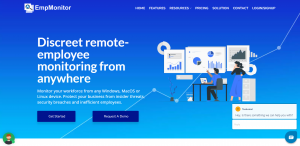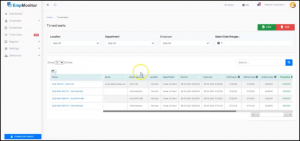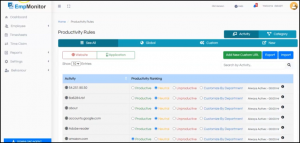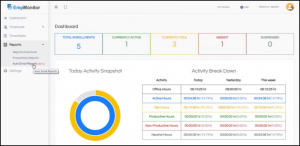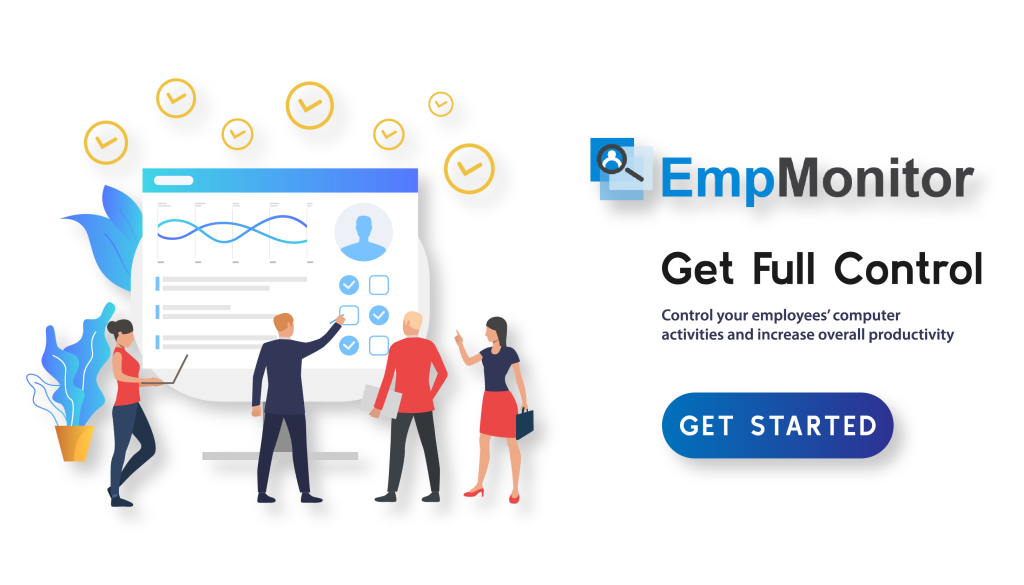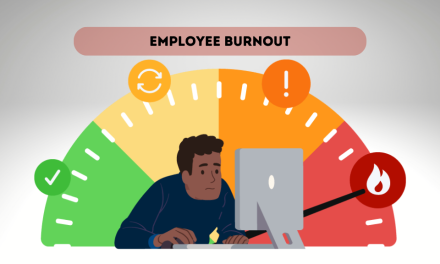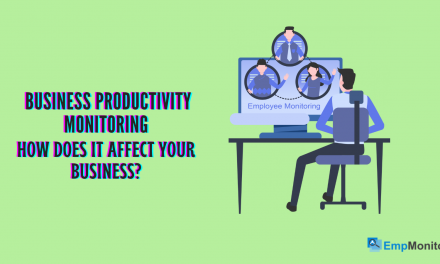Do you have trouble managing your time, or is your employee productivity getting affected?
Does the day not provide enough hours to devote to your tasks, habits, responsibilities, and so on?
Do you look at your to-do list at half-past five and feel you haven’t accomplished much? Having moments of being unproductive or feeling overwhelmed by millions of things leave you no choice, but to surrender.
Don’t worry; everyone can relate to this— but don’t give up so easily: try using the 4 Ds of time management.
The time management skills are fundamental, yet it is incredibly effective. In some ways, we may call it the 4 Ds of productivity since it unlocks hidden resources and allows you to use them effectively, resulting in exceptional outcomes. If you’re trying to master your time, you’ll find it helpful – if not entirely then to a certain amount.
This blog will go through the 4 Ds of time management, including what they are, why they are essential, and how you can measure employee productivity with EmpMonitor and the 4 Ds.
Let’s get started.
What Are The 4 D’s Of Time Management?
The 4 Ds of time management is a collection of 4-distinct and complementary activities that you may utilize to prioritize your job duties. This time management strategy is convenient when you’re overworked since it outlines what you should accomplish with each activity to cross it off your to-do list. You can boost your efficiency and complete your work faster if you use the 4 Ds of time management.
Now let’s go through the 4 Ds of time management and how everyone from freelancers to managers and teams can utilize them to boost employee productivity.
The Importance of Time Management
- Assists you in completing the most crucial and time-sensitive jobs. Because you have put in more effort, you can complete your prioritized tasks with higher quality.
- It boosts your capacity to focus since you have a deadline to complete your task.
- Naturally, you become more productive. What produces outcomes is what you pursue one at a time.
- It assists you in dealing with delays. You are not delaying if you prioritize the most vital activities.- that is you; establish your priorities correctly.
Understanding The 4 Ds Of Management
Delete
Delete tasks, commonly known as ‘Drop,’ is the first crucial aspect in the 4Ds of time management. The concept is to eliminate useless and unneeded tasks from your to-do list.
Not every task in your life or profession is equal in importance. Remove any meaningless personal and professional commitments that have little bearing on your life and career. Even some of them will provide you with little or no long-term value in your life or work. The key to implementing the ‘Delete’ strategy is to go through your daily routine and assess the usefulness of each job on your to-do list.
Delegate
Next, try to delegate some of your incoming responsibilities to improve your time management abilities. You may consider hiring a freelancer, asking a coworker to assist, taking up the slack, or giving a job to someone you manage and delegating tasks that you know others can execute quicker and more accurately than you. This way can free up your time to address more critical challenges.
As you all work together to reach the shared objective of finishing a task, keep your focus on teamwork.
Defer
Next, defer, sometimes known as delay, is a mechanism for suspending processes that do not require immediate attention. Deferring involves saying ‘no’ now to lower-priority jobs. It may be planned whenever you are free or have the time.
The fundamental idea behind Defer’s notion is that if you can’t erase certain things from your to-do list but don’t need to invest your time in them, you may postpone them for later.
Do
The last D stands for “DO” and is the simplest. Time management is about solid planning, but you must act and do it at some point. Finish the items on your list.
If you’re unsure if you should do anything, ask yourself the following questions:
- Is this a time-sensitive task?
- Do I have enough time and resources to finish it?
- Is it interfering with anything else I’m doing?
If the work must be finished immediately and you are ready to face it, go ahead. Instead, consider deleting, delegating, deferring, and doing.
How To Increase Employee Productivity In The Workplace Using 4 Ds?
To get the most out of the 4Ds of time management, you must first examine how you spend your time – how long specific tasks take and how much time you waste. You may manually track your time by writing down your actions, or you can utilize employee productivity management software such as EmpMonitor. It will allow you to get the most out of the 4Ds time management strategy.
EmpMonitor is a cloud-based employee monitoring tool that lets you do employee tracking of their actions from a single dashboard. Using the EmpMonitor, you can monitor every activity taken by your staff during office hours. It will help in measuring and ensuring that the employee productivity standards are met.
Time Tracking, Employee Productivity tracking, Regular Screenshots, Keystroke Logging, Top Websites Used, Stealth Mode, and Report Generation are just a few capabilities EmpMonitor offers to prove that employee productivity and efficiency are its top priority.
EmpMonitor makes sure to provide you with tools that assist you in recognizing your employees’ work habits. Some of its important aspects are as follows:
Timesheet Administration
You can determine whether or not your staff are giving their best. A timesheet is a feature that aims to improve employee productivity as they clock in and out. It creates a function triggered when employees turn on their computers, and the system logs the time as a clock-in time.
Employee Productivity Estimation
Using the activity breakdown report, you can see how long your employees have been sitting at work. Furthermore, for those who want to delve deeper into the data, EmpMonitor offers a detailed analysis of employee productivity figures.
Reporting in Detail
EmpMonitor allows you to keep track of employee productivity through reports. You can see if your employees manage their time effectively enough to complete tasks on time. Employees from various departments’ daily work reports are available for viewing.
Application Monitoring
Users can keep track of each URL they visit and the amount of time they spend on each website. You can see the top ten most visited websites in real-time and a 180-day history in a single glance.
Remember that your employees are the backbone of your company. Reward them for their efforts with appreciation and hard work, which can lead to increased employee productivity. And now that you have EmpMonitor on your side, I am confident that employee recognition will be a breeze.
Also Watch: How to Manage Employee Reports | EmpMonitor How-To Tutorial Series
How To Apply The 4 Ds Method
We all have an ever-expanding to-do list, and project managers are no exception. Because our responsibilities and demands limit our time, we must choose how we spend this valuable resource carefully to ensure that our tasks are aligned with our larger goals.
To begin using the 4 Ds approach, look at your to-do list at the start of the workday and assess which tasks can be completed quickly by you or someone else on your team, which ones can be dropped entirely, and which essential duties can be deferred for now.
As you gain more experience with the 4 Ds approach, you can apply it as tasks and requests cross your desk—even before they land and take root on your to-do list.
Important Takeaways
- The 4 Ds of Time Management assists an individual in determining whether a task, demand, or request is worth their time investment.
- The 4 Ds of Time Management is essential for product managers who must ensure that tasks are aligned with personal or organizational goals and objectives.
- Delete, Delegate, Defer, and Do are the 4 Ds of Time Management. Each of the four categories encourages people to filter requests or tasks before acting on them.
Buckle Up & Get It Done,
Sounds simple, right? However, it won’t be easy, especially at first. You only have 24 hours per day; no matter who you are or your designation, you may need to break many habits. You may believe that sitting and categorizing tasks is a waste of time. However, once you’ve gotten used to it, you’ll have a clear picture of how you work and where you fall on your way to learning to make quick decisions. And if not, you always have EmpMonitor- The employee productivity tool by your side to monitoring screen of your employees.
So, how do you spend your free time? Are you sure you don’t need to make any changes? Before you say “no,” consider a cynical truth: time is money, and wasting it will inevitably affect the contents of your wallet.


